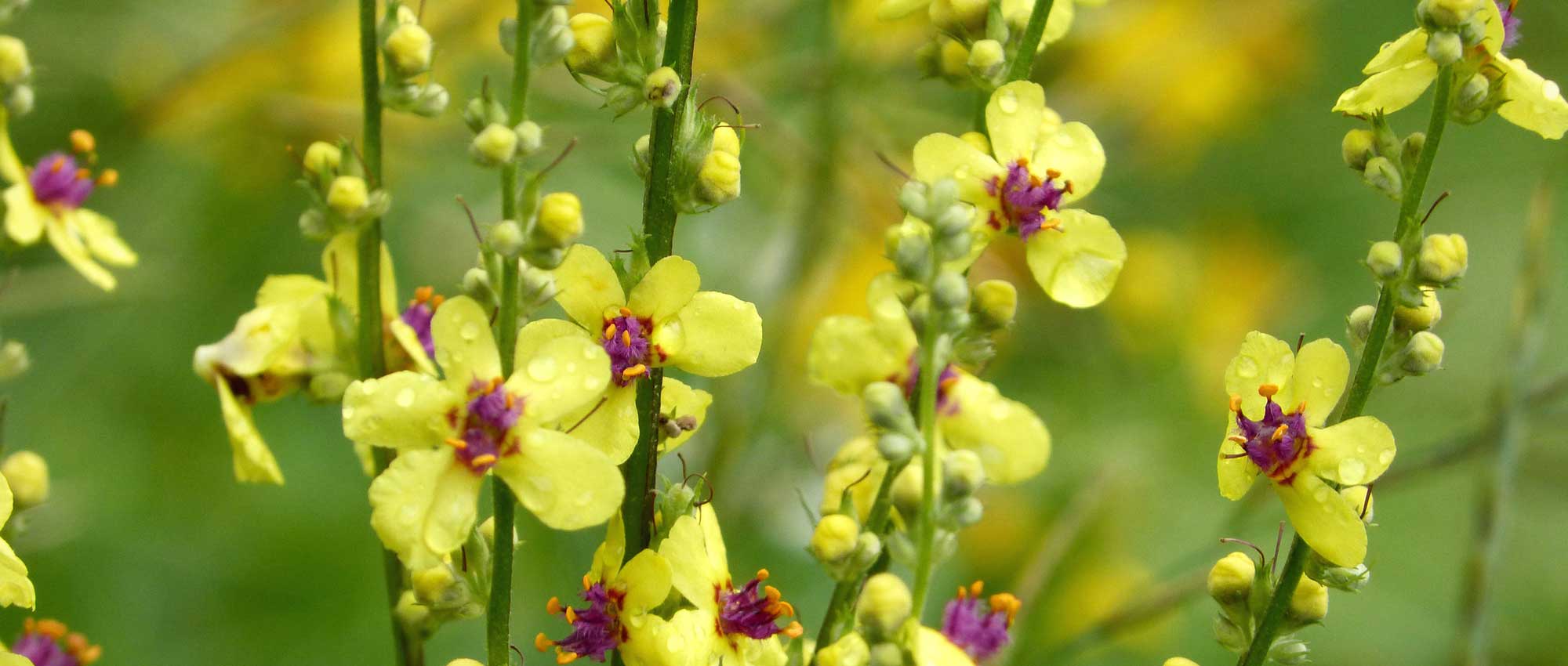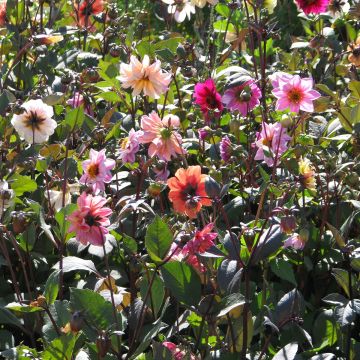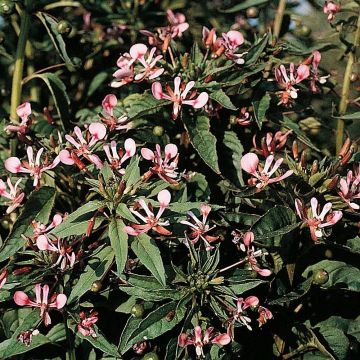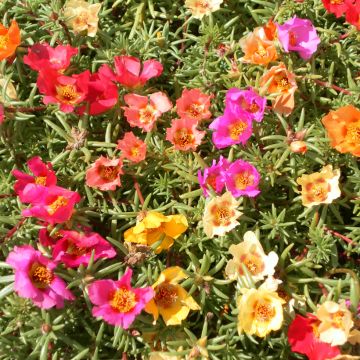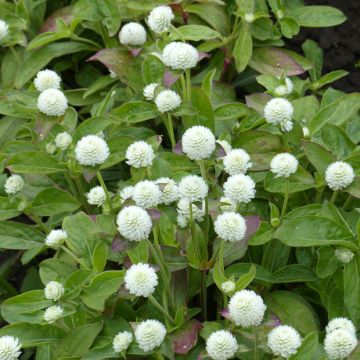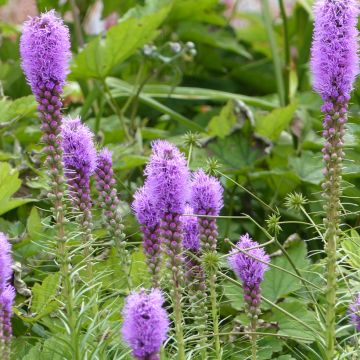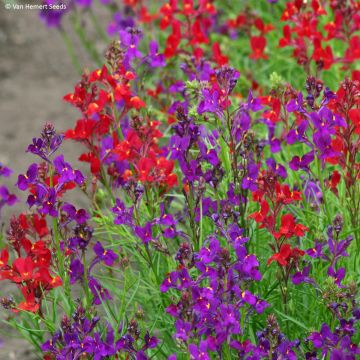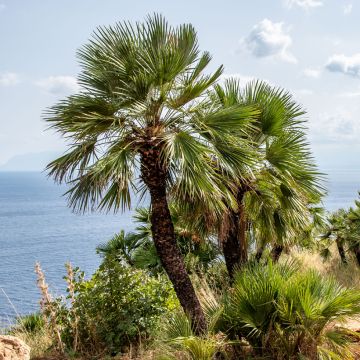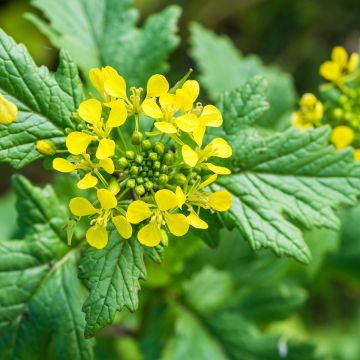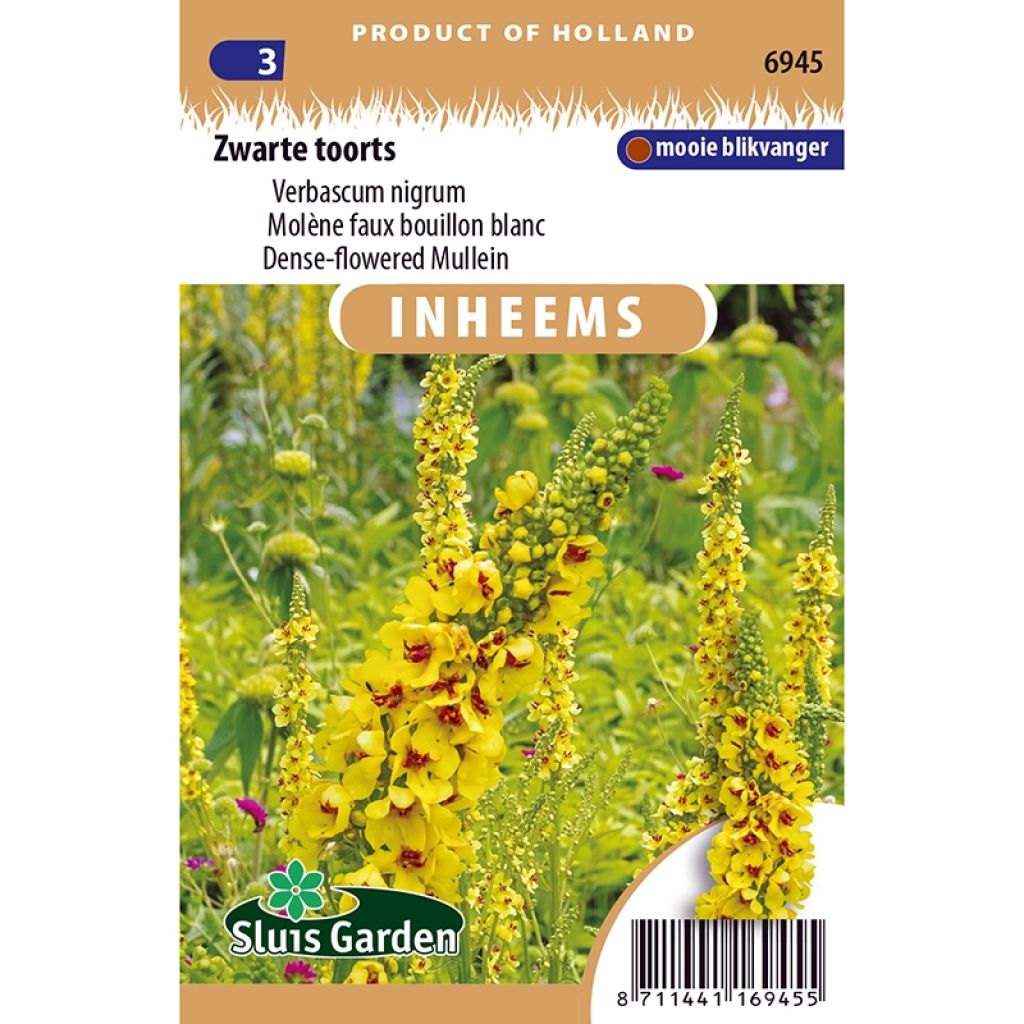

Graines de Molène noire ou Bouillon-noir - Verbascum nigrum
Verbascum nigrum
Verbascum nigrum
Black Mullein, Dark Mullein
Special offer!
Receive a €20 voucher for any order over €90 (excluding delivery costs, credit notes, and plastic-free options)!
1- Add your favorite plants to your cart.
2- Once you have reached €90, confirm your order (you can even choose the delivery date!).
3- As soon as your order is shipped, you will receive an email containing your voucher code, valid for 3 months (90 days).
Your voucher is unique and can only be used once, for any order with a minimum value of €20, excluding delivery costs.
Can be combined with other current offers, non-divisible and non-refundable.
Home or relay delivery (depending on size and destination)
Schedule delivery date,
and select date in basket
This plant carries a 6 months recovery warranty
More information
We guarantee the quality of our plants for a full growing cycle, and will replace at our expense any plant that fails to recover under normal climatic and planting conditions.
Would this plant suit my garden?
Set up your Plantfit profile →
Description
The Black Mullein, in Latin Verbascum nigrum, is native to France and Western Europe and is one of the most beautiful species of wild mulleins due to its magnificent floral spikes laden with bright yellow flowers and purple stamens. It is a short-lived but robust perennial plant that is generous and easy to grow, flowering abundantly throughout the summer. Charming and with a strong presence, it is also a friend to our native fauna and a somewhat forgotten medicinal plant. Although sometimes biennial, it readily self-seeds in the sun and ordinary soil. It grows quickly and upright, adding lightness and verticality to country or romantic flowerbeds.
Black Mullein belongs to the Scrophulariaceae family. It is a Eurasian species found in fallow fields and fallow land, on the edge of forests, and along railways, usually on limestone terrain. Perfectly hardy, it thrives in slightly damp or dry soils that are not too compact or suffocating. Its name, Black Mullein, comes from the dark colour of the petioles that bear its basal leaves.
This plant will reach approximately 1m (3ft) in height when flowering in ordinary or even poor soil, but sometimes more if the growing conditions are very favourable, such as in rich and moist soil. Its growth is rapid, and its final size can be achieved within a few months. This mullein first develops a rosette of large, slightly hairy and wavy basal leaves of a dark green colour. Long, branched and leafy floral stems rise from the rosette in the second year. The flowering period is long, from June to September depending on the climate. The floral stems are angular, thick, very rigid, and slightly branched at the base, resembling candelabras. On the narrow spike, open flowers, flower buds, and fruits coexist. Each flower is a corolla with 5 bright yellow petals (occasionally white), enhanced by plumose purple stamens. The flowers open in groups along the spike. After pollination by pollinating insects, capsules containing a large number of fine seeds are formed. Black Mullein develops a powerful and deep taproot that allows it to adapt to drought but does not like to be disturbed: plants grown from direct sowing are more long-lived and more beautiful.
As a plant for open spaces, Verbascum nigrum is a boon for natural gardens. Not demanding, the plant will be much more decorative if it benefits from good garden soil and occasional watering in very dry weather. The slightly wild areas of the garden will be transformed by mulleins, whether botanical or hybrids. Accompany the mulleins with foxgloves, Fraxinella, purple toadflax, wild chicory, Buenos Aires verbena, scabious centaury, nigella, or beautiful purple fennel. They are also good companions for roses, as well as foxgloves. It is preferable to surround them with perennials or shrubs such as catmints, hyssops, or veronicas, for example, to fill the space when they are not in bloom.
A medicinal plant: Black Mullein (and the Great Mullein Verbascum thapsus) is used in the composition of the 4-flower herbal tea, which is used to soothe coughs. The flowers should be harvested in the morning and dried quickly in the air and in the dark.
Flowering
Foliage
Plant habit
Botanical data
Verbascum
nigrum
Schrophulariaceae
Black Mullein, Dark Mullein
Western Europe
Other Flower seeds A to Z
View all →Planting and care
Sow your mullein seeds in April-May or September-October, in a seed tray or directly in open ground. The plants from direct sowing are more reliable and longer-lasting.
In a seed tray: sow in seed trays or crates filled with a special seed compost, at a depth of 1.5mm. Place your seedlings in a heated mini-greenhouse or in a warm place to maintain an optimal temperature between 15 and 18 °C (59 and 64.4°F). Germination usually takes 3 weeks.
Transplant the young plants when they are sufficiently developed to be handled, into pots with a diameter of 8cm (3in). When the seedlings are well rooted, plant them in their final location in autumn or spring. Maintain a distance of 30cm (12in) between each plant.
In open ground: the sowing can be done directly in open ground in spring or late summer, in a well-prepared soil, lightened with sand and compost if necessary, and cleared of any weeds or roots. Keep only one plant every 50cm (20in).
Cultivation:
Verbascum nigrum should be planted in full sun, or at most in partial shade in the south. This mullein should be planted in ordinary soil, but with good drainage: it dreads very wet and waterlogged soils. It prefers a fresh to dry, calcareous soil in summer, where it will readily self-sow. Cut the faded inflorescences at the base of the stem to promote the re-flowering and longevity of the plant. Prune the dry parts as soon as they are no longer decorative and clean the clump no later than the end of winter. If you let some seeds mature, your mullein may self-sow spontaneously in the garden, in light soil.
Sowing period
Intended location
Planting & care advice
This item has not been reviewed yet - be the first to leave a review about it.
Similar products
Haven't found what you were looking for?
Hardiness is the lowest winter temperature a plant can endure without suffering serious damage or even dying. However, hardiness is affected by location (a sheltered area, such as a patio), protection (winter cover) and soil type (hardiness is improved by well-drained soil).

Photo Sharing Terms & Conditions
In order to encourage gardeners to interact and share their experiences, Promesse de fleurs offers various media enabling content to be uploaded onto its Site - in particular via the ‘Photo sharing’ module.
The User agrees to refrain from:
- Posting any content that is illegal, prejudicial, insulting, racist, inciteful to hatred, revisionist, contrary to public decency, that infringes on privacy or on the privacy rights of third parties, in particular the publicity rights of persons and goods, intellectual property rights, or the right to privacy.
- Submitting content on behalf of a third party;
- Impersonate the identity of a third party and/or publish any personal information about a third party;
In general, the User undertakes to refrain from any unethical behaviour.
All Content (in particular text, comments, files, images, photos, videos, creative works, etc.), which may be subject to property or intellectual property rights, image or other private rights, shall remain the property of the User, subject to the limited rights granted by the terms of the licence granted by Promesse de fleurs as stated below. Users are at liberty to publish or not to publish such Content on the Site, notably via the ‘Photo Sharing’ facility, and accept that this Content shall be made public and freely accessible, notably on the Internet.
Users further acknowledge, undertake to have ,and guarantee that they hold all necessary rights and permissions to publish such material on the Site, in particular with regard to the legislation in force pertaining to any privacy, property, intellectual property, image, or contractual rights, or rights of any other nature. By publishing such Content on the Site, Users acknowledge accepting full liability as publishers of the Content within the meaning of the law, and grant Promesse de fleurs, free of charge, an inclusive, worldwide licence for the said Content for the entire duration of its publication, including all reproduction, representation, up/downloading, displaying, performing, transmission, and storage rights.
Users also grant permission for their name to be linked to the Content and accept that this link may not always be made available.
By engaging in posting material, Users consent to their Content becoming automatically accessible on the Internet, in particular on other sites and/or blogs and/or web pages of the Promesse de fleurs site, including in particular social pages and the Promesse de fleurs catalogue.
Users may secure the removal of entrusted content free of charge by issuing a simple request via our contact form.
The flowering period indicated on our website applies to countries and regions located in USDA zone 8 (France, the United Kingdom, Ireland, the Netherlands, etc.)
It will vary according to where you live:
- In zones 9 to 10 (Italy, Spain, Greece, etc.), flowering will occur about 2 to 4 weeks earlier.
- In zones 6 to 7 (Germany, Poland, Slovenia, and lower mountainous regions), flowering will be delayed by 2 to 3 weeks.
- In zone 5 (Central Europe, Scandinavia), blooming will be delayed by 3 to 5 weeks.
In temperate climates, pruning of spring-flowering shrubs (forsythia, spireas, etc.) should be done just after flowering.
Pruning of summer-flowering shrubs (Indian Lilac, Perovskia, etc.) can be done in winter or spring.
In cold regions as well as with frost-sensitive plants, avoid pruning too early when severe frosts may still occur.
The planting period indicated on our website applies to countries and regions located in USDA zone 8 (France, United Kingdom, Ireland, Netherlands).
It will vary according to where you live:
- In Mediterranean zones (Marseille, Madrid, Milan, etc.), autumn and winter are the best planting periods.
- In continental zones (Strasbourg, Munich, Vienna, etc.), delay planting by 2 to 3 weeks in spring and bring it forward by 2 to 4 weeks in autumn.
- In mountainous regions (the Alps, Pyrenees, Carpathians, etc.), it is best to plant in late spring (May-June) or late summer (August-September).
The harvesting period indicated on our website applies to countries and regions in USDA zone 8 (France, England, Ireland, the Netherlands).
In colder areas (Scandinavia, Poland, Austria...) fruit and vegetable harvests are likely to be delayed by 3-4 weeks.
In warmer areas (Italy, Spain, Greece, etc.), harvesting will probably take place earlier, depending on weather conditions.
The sowing periods indicated on our website apply to countries and regions within USDA Zone 8 (France, UK, Ireland, Netherlands).
In colder areas (Scandinavia, Poland, Austria...), delay any outdoor sowing by 3-4 weeks, or sow under glass.
In warmer climes (Italy, Spain, Greece, etc.), bring outdoor sowing forward by a few weeks.






























